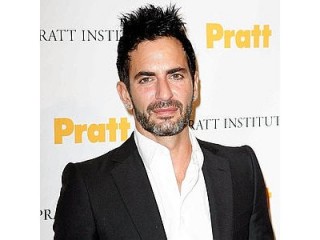
Marc Jacobs biography
Date of birth : 1963-04-09
Date of death : -
Birthplace : New York City, New York, U.S.
Nationality : American
Category : Famous Figures
Last modified : 2011-09-19
Credited as : fashion designer, ,
0 votes so far
Feeling alienated from his mother and siblings, Jacobs moved in with his paternal grandmother on the Upper West Side of Manhattan when he was still a teenager. It was while living with his grandmother that Jacobs truly felt at home; well-traveled and educated, her love of aesthetically beautiful things and her appreciation for Jacobs' creative designs helped the grandmother and grandson forge a close relationship. "I always say I lived my life with my grandmother," Jacobs says. "She was emotionally stable, and she was very encouraging to me." Jacobs' grandmother also allowed Jacobs to enjoy a permissive adolescence full of self-exploration. "No one ever said 'no' to me about anything," he said. "No one ever told me anything was wrong. Never. No one ever said, 'You can't be a fashion designer.' No one ever said, 'You're a boy and you can't take tap-dancing lessons.' No one ever said, 'You're a boy and you can't have long hair.' No one ever said, 'You can't go out at night because you're 15 and 15-year-olds don't go to nightclubs.' No one said it was wrong to be gay or right to be straight."
Yet, for all his freedoms, Jacobs stayed focused on his dreams of becoming an important designer. By the age of 15, he was attending the High School of Art and Design during the day and, after school, working at the upscale clothing boutique Charivari. The staff of Charivari allowed their young stockboy to design sweaters for the store in between his tasks of folding clothes and dressing mannequins. The work helped Jacobs land a spot at the coveted Parsons School for Design, where he stood out among his classmates by winning both the Perry Ellis Gold Thimble Award and Design Student of the Year at graduation in 1984. Just after graduating, at the age of 21, he designed his first collection for the label Sketchbook for Reuben Thomas. He cited the visually rich films Amadeus and Purple Rain his inspirations for the line. In 1987, he became the youngest designer ever to win the Council of Fashion Designers of America Perry Ellis Award for New Fashion Talent.
Jacobs took over as the women's-wear designer for Perry Ellis, where he won the prestigious 1992 CFDA prize for Womenswear Designer of the Year (an award he would win again in 1997). In 1993, after Perry Ellis shuttered its manufacturing operations and after Jacobs sent out a "grunge" collection for the label that critics loved but the company hated Jacobs struck out on his own. With financial backing from his former bosses, he started his own company with longtime business partner Robert Duffy. The Marc Jacobs label soon proved a success.
In 1997, Jacobs was named creative director of the Louis Vuitton house of luxury goods in Paris. The job was a professional triumph, but it brought new pressures that threw Jacobs's personal life into a tailspin. He began a period of heavy drug use, with near-nightly binges of cocaine, heroin and alcohol. "It s a cliché," Jacobs later said of his addiction, "but when I drank I was taller, funnier, smarter, cooler." Friends, including model Naomi Campbell and Vogue editor Anna Wintour, persuaded Jacobs to seek help. He checked into rehab in 1999.
After getting clean, Jacobs threw himself back into his work, launching Louis Vuitton's first ready-to-wear line while expanding his own label. His three Marc Jacobs collections two for adults and one for children are sold at dozens of Marc Jacobs boutiques worldwide. He has also licensed his name to perfumes and accessories. The Council of Fashion Designers of America named him the Menswear Designer of the Year in 2002, and Accessories Designer of the Year in 1998/99, 2003 and 2005.
In January 2010, Jacobs married boyfriend Lorenzo Martone, a Brazilian PR executive, at a friend's home in St. Barts in the French West Indies. Years after his debut as the "boy wonder" of the fashion world, Jacobs' work continues to turn heads. "For some reason, Marc's show is always the most important place to be seen," one fan said, "the one place where you know all the people who matter will be."
















